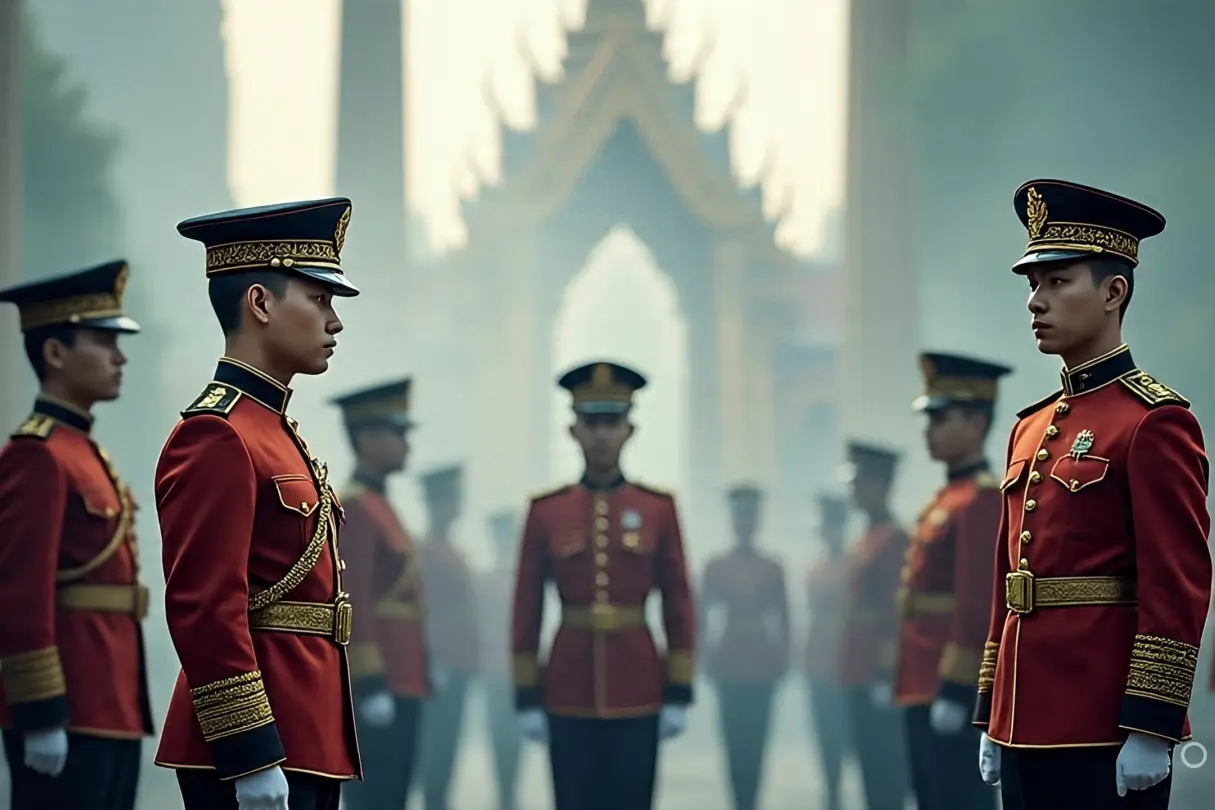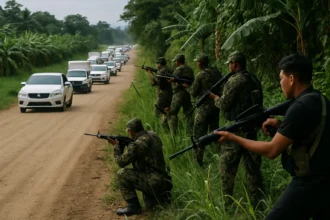🏰 The Official Story: A Shocking Royal Death
On the morning of June 9, 1946, 20-year-old King Ananda Mahidol (Rama VIII) was found dead in his bedroom at the Boromphiman Throne Hall, inside the Grand Palace in Bangkok. A gunshot wound to the head. A Colt .45 pistol by his side. No signs of forced entry or struggle.
Ananda was a quiet, intellectual monarch, educated in Switzerland, and had only recently returned to Thailand to assume his royal duties. His death came just days before he was scheduled to formally begin his reign in full.
At first, the government declared the incident an accident, possibly a misfire while handling the gun. But the story didn’t hold up. Public skepticism grew. Was it suicide? Was it murder? And if it was murder—who would kill a king?
🔍 The Conspiracy Theories: Who Wanted the King Dead?
With little concrete information from officials, conspiracy theories flourished. Some were whispered in corridors of power; others gained traction in public debates and among scholars. Decades later, no single theory has been proven—but each paints a different picture of what might have happened that morning.
🏛️ Palace Intrigue
One theory suggests the killing was an inside job, rooted in royal rivalries. Some speculate that tensions between the young king and palace figures may have escalated into betrayal. His younger brother, Prince Bhumibol Adulyadej, was in the palace that morning and became King Rama IX shortly afterward.
While there’s no credible evidence implicating Bhumibol, theorists argue that factions within the royal court may have wanted a different figure on the throne—one more aligned with their vision of the monarchy’s future.
🕵️ Foreign Involvement
Another theory involves foreign intelligence services, particularly during the chaotic post-World War II environment. Thailand had just emerged from a complicated wartime stance—first siding with Japan, then flipping to cooperate with the Allies.
Some allege that British or American intelligence agencies may have sought to destabilize or control the succession to protect their geopolitical interests in Southeast Asia. These theories remain highly speculative and lack documentation—but they continue to circulate in academic and nationalist circles.
🎭 Political Power Plays
The most persistent theory centers on internal Thai political dynamics. At the time, military factions, royalists, and civilian politicians were locked in a power struggle. Some believe that Ananda may have posed a threat to particular military leaders who wanted a more pliant monarch.
This idea gained strength due to how the investigation was handled—with rapid political fallout and a confusing, convoluted legal process.
⚖️ The Trial: Three Men, One Verdict, No Closure
In 1948, the Thai government arrested three palace staff: Chalit Pootinand, Butr Prom-on, and Sith Savetsila (not to be confused with the diplomat of the same name). They were accused of conspiring to assassinate the king.
The trial lasted seven years and was riddled with inconsistencies. Witnesses contradicted each other. Evidence was scarce or poorly handled. Defendants claimed they were tortured into confessions. Even some high-ranking officials expressed doubt over the case.
Despite the uncertainty, all three were found guilty and executed by firing squad in 1955.
📌 Critical Observations:
-
No clear motive was ever established for the accused.
-
Forensic science at the time was rudimentary.
-
Independent observers—including some diplomats—voiced doubts about the fairness of the proceedings.
Instead of bringing closure, the trial deepened suspicion and left many Thais wondering if justice had really been served—or if scapegoats had been sacrificed to protect deeper truths.
🧠 Why the Truth Remains Elusive
To this day, Thailand has never officially reopened the investigation, and discussing the royal family in the kingdom is legally sensitive due to strict lèse-majesté laws.
Several historians and journalists who have attempted to probe the case have been silenced or exiled, and Thai school textbooks avoid deep discussion of the king’s death. Official archives remain sealed or heavily redacted.
The result? A permanent historical blind spot.
🔍 Why we still don’t know the full story:
-
State censorship and national security laws
-
Cultural reverence that discourages critical inquiry
-
Political implications that remain volatile even today
🏛️ The Impact on Thailand’s Monarchy and Politics
The death of King Ananda Mahidol didn’t just end one life—it reshaped Thailand’s modern history.
His younger brother, Bhumibol Adulyadej, would go on to rule for 70 years, becoming the world’s longest-reigning monarch. The mystery surrounding Ananda’s death added an air of tragedy—and caution—to the institution. Bhumibol carefully rebuilt public trust in the monarchy, aligning it with moral authority and national unity.
But the event also reinforced the opaque nature of royal and political power in Thailand. The unresolved questions around Ananda’s death continue to haunt the nation’s historical narrative, allowing revisionism, myth-making, and political manipulation to fill the void.
In modern Thai politics—where protests, coups, and royalist rhetoric remain constant features—the 1946 mystery stands as a symbol of unanswered questions and the dangers of unaccountable power.
🧭 Why This Still Matters
The story of King Ananda Mahidol’s death is not just about the past. It reflects the fragility of truth under authoritarian systems, the costs of secrecy, and the limits of justice in politically charged environments.
For historians, it’s a puzzle that may never be solved. For the Thai people, it’s a wound that never fully closed. And for the world, it’s a reminder that even monarchies draped in ceremony and tradition can be shaken by the same forces—fear, ambition, and silence—that shape all human power.




